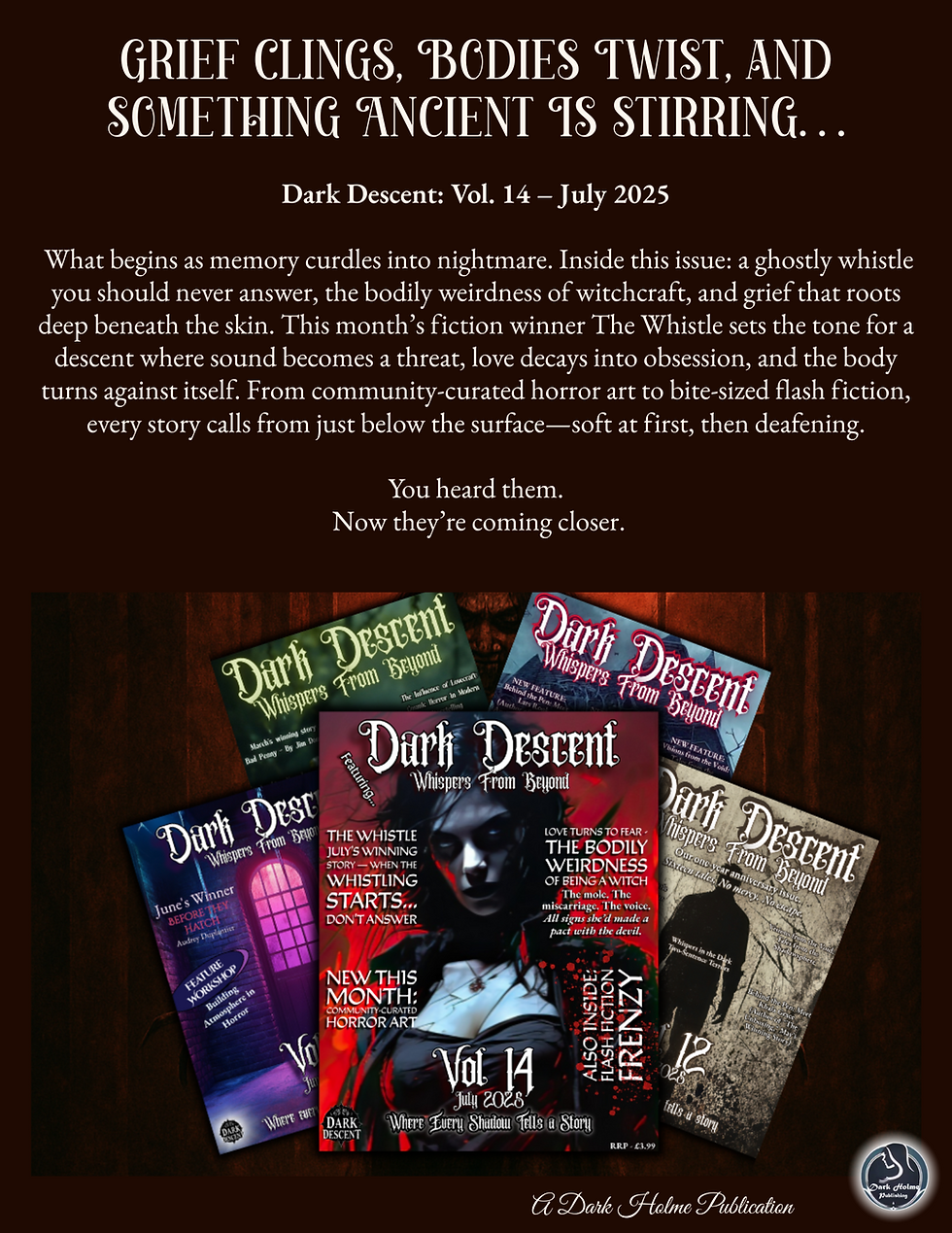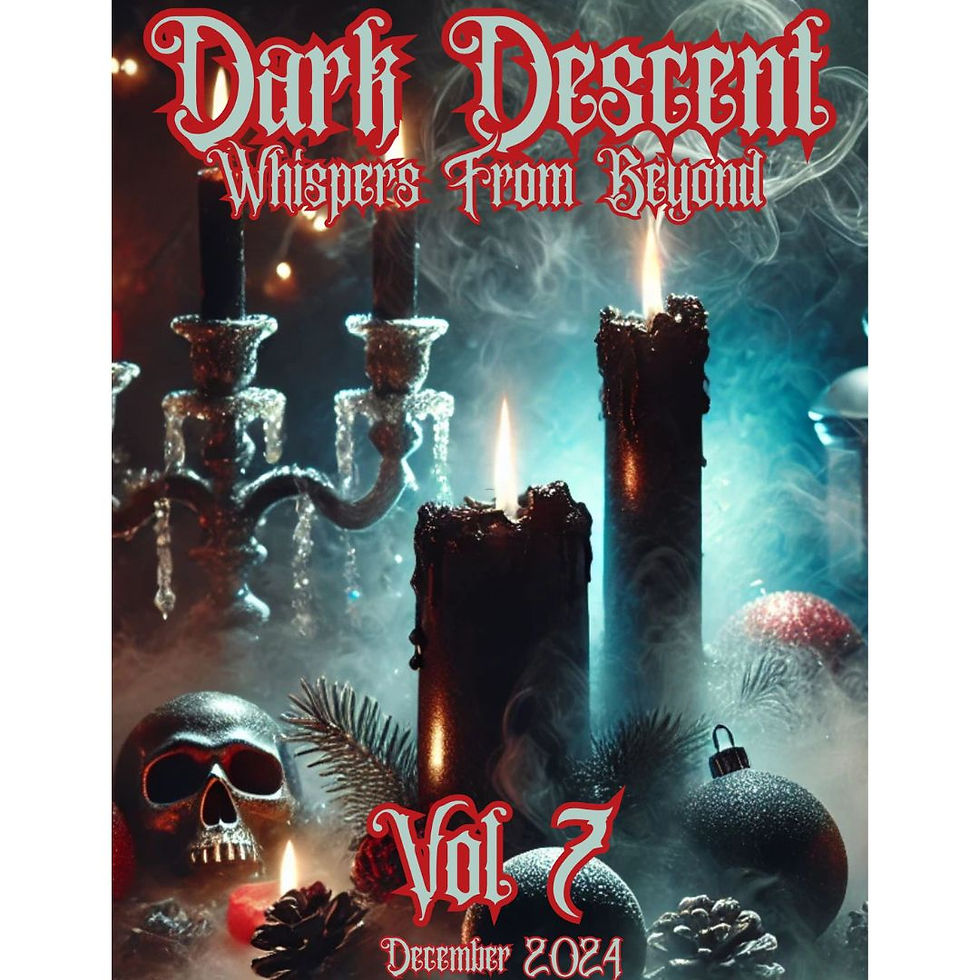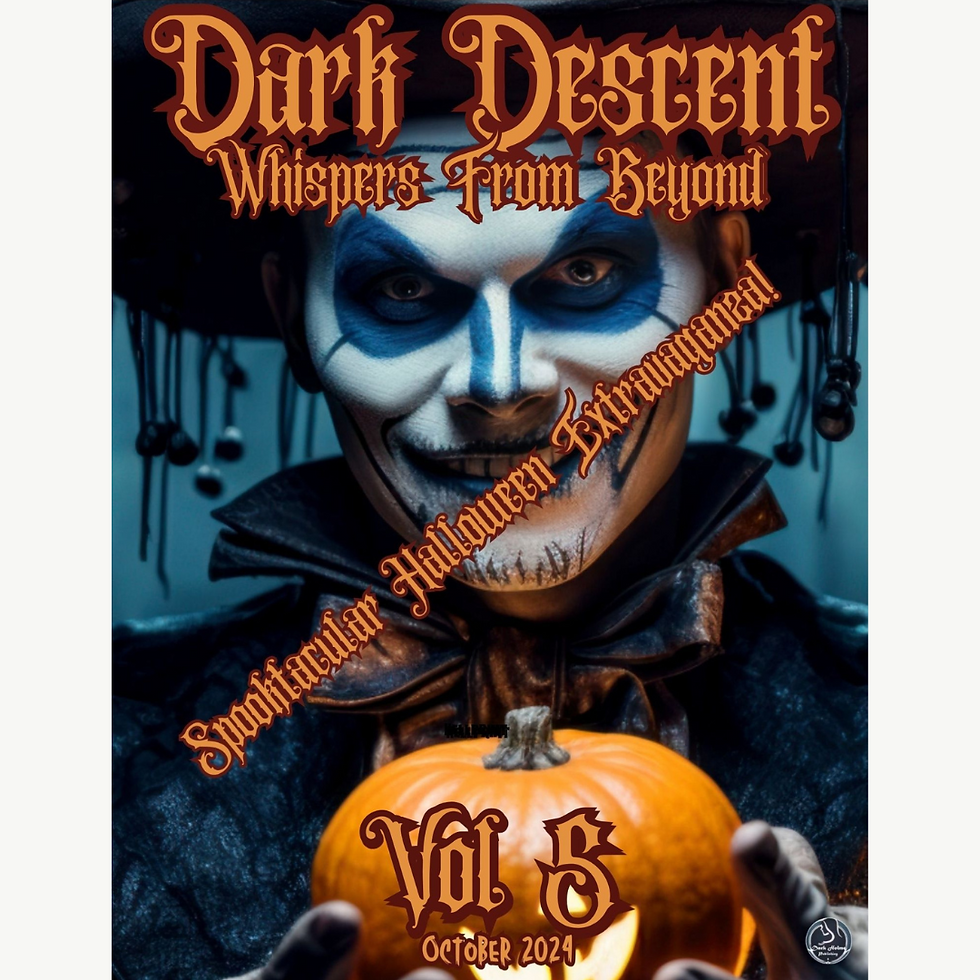The Healing Power of Fear: Using Horror Crafting as Therapy
- darkholmepublishing

- Jan 27
- 4 min read
In today's fast-paced world, many people are seeking unconventional ways to cope with stress and emotional pain. While traditional therapy often involves talking about feelings in a clinical setting, horror crafting offers an engaging alternative. By channeling fear into creative expression, individuals can confront their anxieties and traumas in a safe and controlled environment. This blog post will look at how horror crafting can be an effective therapeutic tool, providing an outlet for emotions that are often hard to express.
Understanding Horror Crafting
Horror crafting encompasses various creative activities, including creating horror-themed art, writing eerie stories, making films, or even designing games. This engaging process allows individuals to interact with frightening themes in a meaningful way, transforming abstract fears into concrete artistic expressions.
The horror genre captivates many for several reasons. A study by the University of Georgia found that about 62% of people enjoy horror media because it provides a safe space to engage with fear. Crafting horror helps externalize personal struggles, enabling individuals to process their emotions through storytelling or artwork. For example, a person who has faced loss might write a chilling tale about grief, providing an avenue to explore painful emotions constructively.
The Connection Between Fear and Healing
Fear is a common feeling we all encounter. It often arises from various sources, such as personal trauma, societal pressures, or uncertainties about the future. Engaging with fear through creativity allows individuals to tackle their feelings from a comfortable distance. This distance is essential because it helps people manage their emotions without feeling overwhelmed.
Research has shown that engaging in creative activities can reduce anxiety and depression symptoms. A survey conducted by the American Journal of Public Health found that 78% of participants who practiced creative arts reported improved mental well-being. For many, horror crafting becomes a powerful means to confront fears directly, turning negative feelings into something productive and expressive.
The Benefits of Horror Crafting
Emotional Expression
A key benefit of horror crafting is the opportunity it presents for emotional expression. Traditional therapy can sometimes feel daunting, but creating horror art or literature allows individuals to articulate their feelings more freely. A dark story, graphic artwork, or even an unsettling film sequence can convey emotions like fear, anger, and sadness.
By channeling difficult emotions into creative projects, individuals often experience a sense of clarity. For instance, someone who feels anxious might create a short horror film that visually explores that anxiety. This process not only helps in understanding the emotion but also facilitates emotional release. According to the Journal of Creativity in Mental Health, 65% of participants reported feeling lighter after sharing their artwork with a group, highlighting the healing potential of this process.
Community and Connection
Participating in horror crafting can create a sense of community. Many find reassurance in sharing their work with others who appreciate the genre. Online forums, local workshops, and writing groups serve as spaces for connection and support.
For example, a horror writing group might encourage members to share their short stories, fostering a supportive environment. Many participants report forming strong friendships through their shared passion, which can greatly enhance their emotional well-being. Feeling understood and accepted is invaluable, especially when navigating life's darker moments.
Empowerment through Storytelling
Storytelling is a potent tool for reclaiming personal narratives. Crafting horror can enable individuals to write about their fears or past traumas, giving them control over their experiences. This empowerment can be transformative; instead of feeling victimized, individuals learn to express and manage their pain through art.
Completing a horror project, whether it’s a chilling novel or a spine-tingling art piece, can boost confidence. One participant in a horror film workshop reported feeling a profound sense of accomplishment after finishing their first project, reinforcing the idea that their voice matters.
Techniques for Horror Crafting as Therapy
Journaling
For those new to horror crafting, journaling can be an excellent starting point. Writing about fears, disturbing dreams, or unsettling thoughts allows individuals to confront emotional challenges. These recorded ideas can later serve as inspiration for stories or characters.
Journaling promotes self-exploration without judgment. For instance, a person might jot down experiences related to anxiety, later expanding these into fictional tales or character backstories. Over time, these entries can evolve into comprehensive narratives or art projects, fostering personal growth.
Visual Arts
Visual arts represent another powerful outlet for horror crafting. Artists can use color, texture, and form to express their emotions visually. Creating illustrations, paintings, or sculptures with dark themes can symbolize an artist's feelings or fears.
Consider using specific symbols or motifs that resonate with personal anxieties. For example, an artist might use foggy landscapes to represent feelings of confusion or isolation. This approach not only facilitates self-discovery but also fosters deeper engagement with the artwork's emotional layers.
Finding Balance in Horror Crafting
While horror crafting can be immensely beneficial, maintaining balance is crucial. Constant engagement with dark themes can impact mental health negatively. Taking breaks and exploring lighter themes can provide essential relief.
Creativity is flexible; engaging with different genres or activities can enrich one's creative journey. Avoiding burnout is easier when creators acknowledge their emotional limits and explore joy-inducing projects alongside horror.
Mindfulness and Reflection
Incorporating mindfulness into the horror crafting process enhances its therapeutic effects. Focusing on the present while creating allows individuals to experience the process itself, rather than becoming consumed by fear.
Reflecting on the crafting experience can also deepen the understanding of one's emotions. Asking reflective questions can provide insights into personal experiences:
What emotions surfaced during creation?
How does this piece connect to my life?
What message do I want viewers to take away?
These reflections cultivate meaningful engagement and insights, making the creative process richer.
Finding Your Path to Healing Through Horror
Horror crafting emerges as a unique therapeutic tool, with significant benefits for emotional expression, community building, and personal empowerment. By converting fear into creativity, individuals can heal and increase self-awareness.
Using techniques like journaling, visual arts, and filmmaking, creators can process their fears while finding connection and grounding in shared experiences. Prioritizing balance and mindfulness further enriches the process, ensuring that creativity remains enjoyable rather than overwhelming.
Ultimately, embracing the healing power of fear can lead to profound self-discovery and meaningful connections. So, take a step into the creative unknown, and let horror crafting illuminate the path through your shadows toward brighter horizons.

.png)

1.png)










































Comments